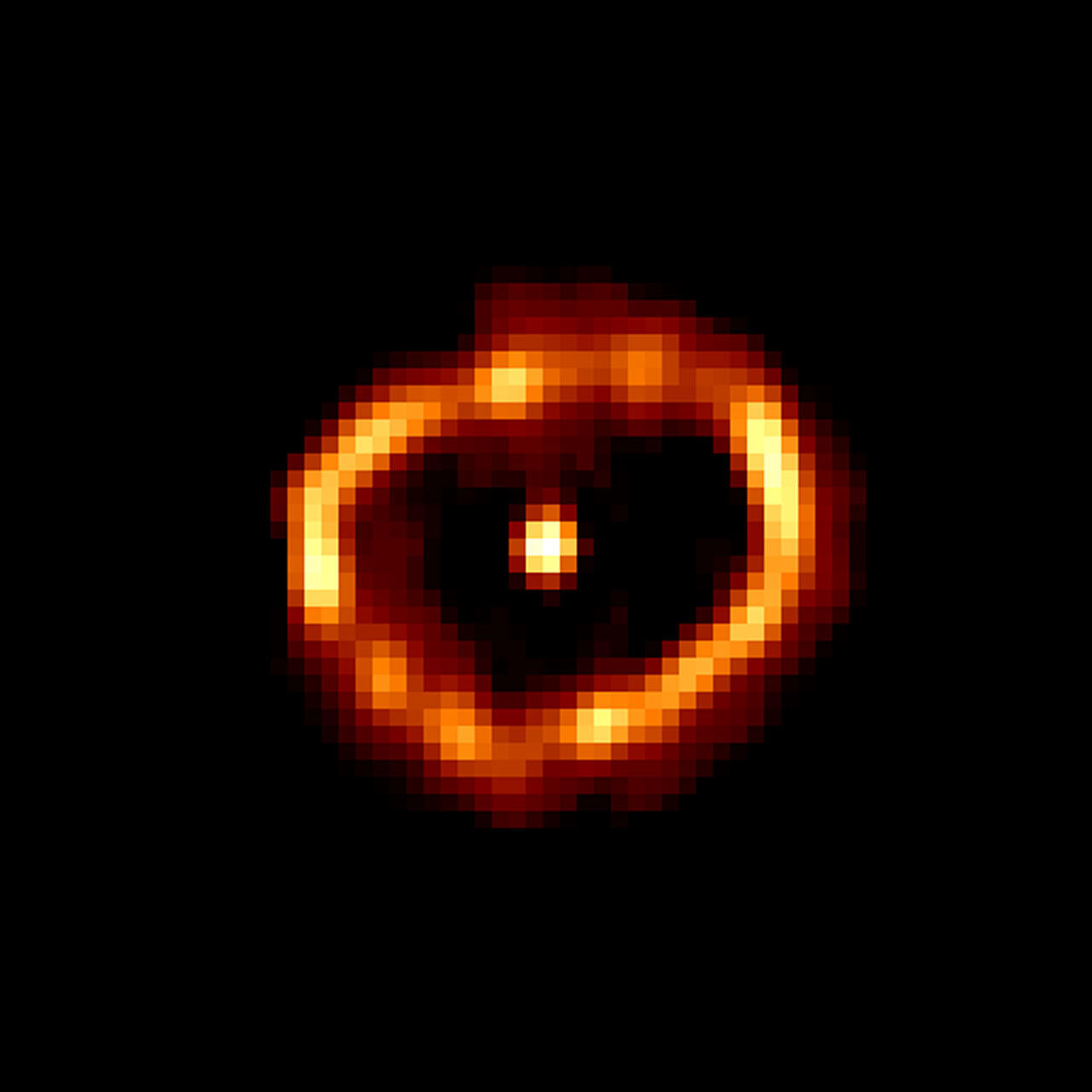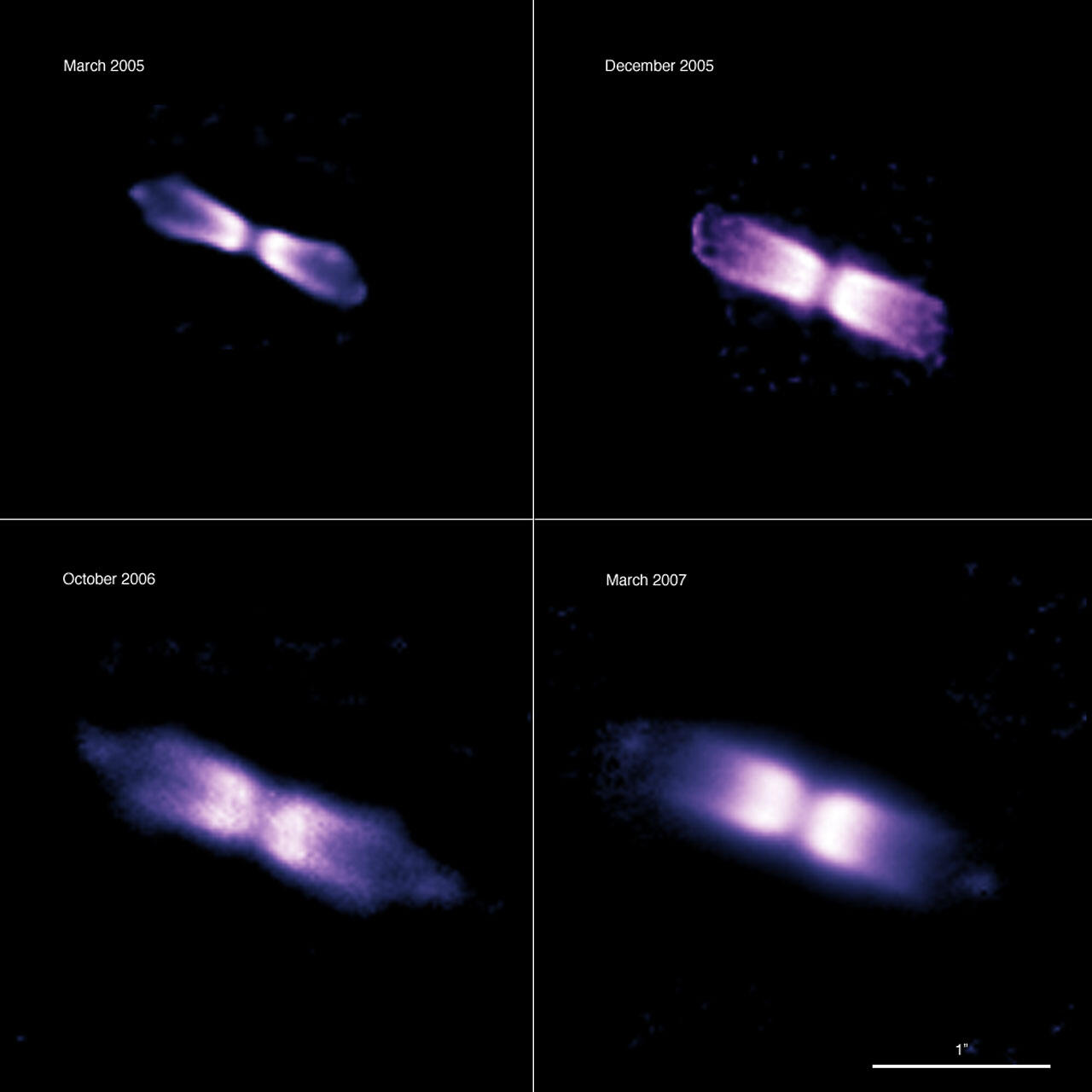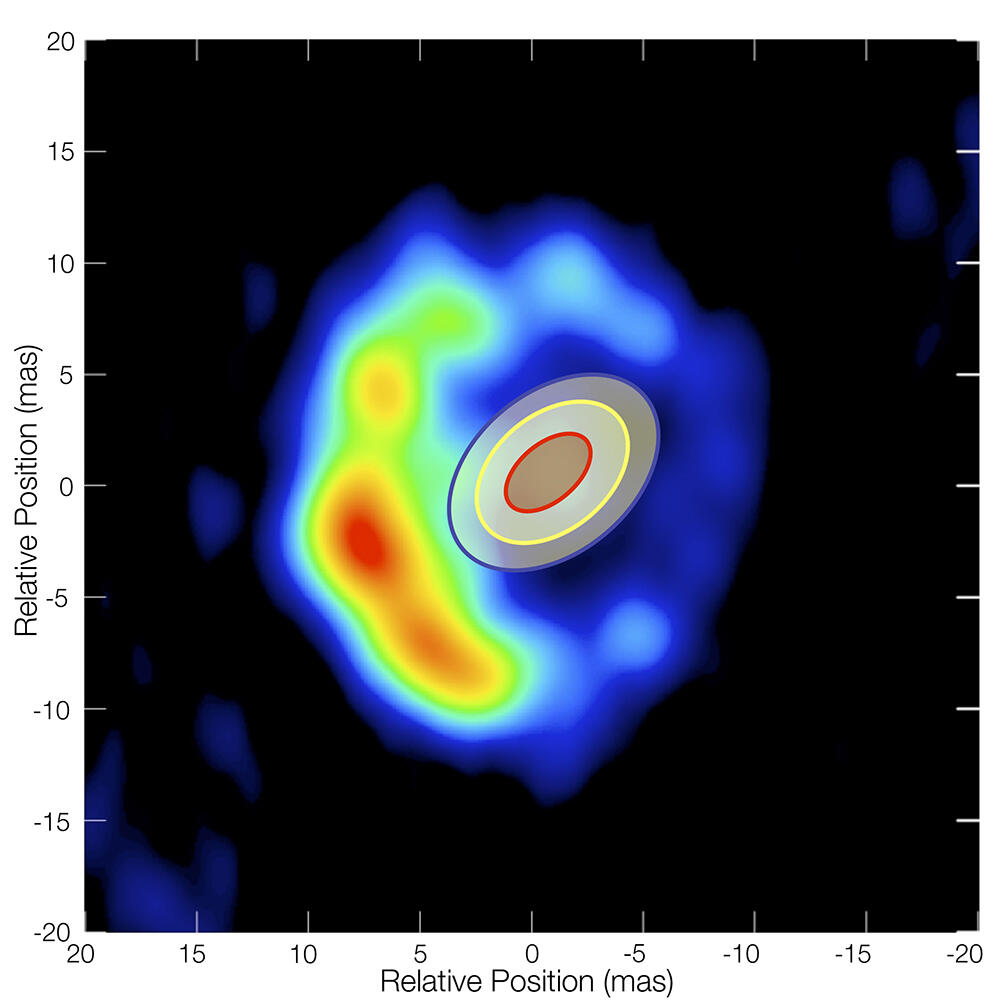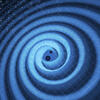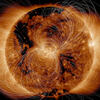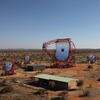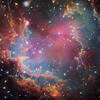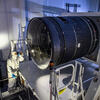You are here
Those stars that come and go

What exactly is a nova?
Piercarlo Bonifacio1 : The term was introduced in the sixteenth century by the Danish astronomer Tycho Brahe who, in a book entitled De Nova Stella, described how a star in the constellation of Cassiopeia suddenly appeared, and then disappeared again. For a long time, the word was used to refer to any temporary appearance of such a celestial body. But then, in the 1930s, it was realised that two different processes underpinned these events. On the one hand, there are supernovae, incredibly powerful explosions of massive stars at the end of their lives; and, on the other, novae, slightly fainter outbursts triggered at the surface of certain highly specific objects called white dwarfs.
So, just what are white dwarfs?
P. B.: A white dwarf is the final state of over 90% of the stars in the Galaxy. When a small one like the Sun has finished burning its nuclear fusion fuel, in other words, when it has stopped converting its hydrogen into helium and then, in certain cases, the latter into carbon and oxygen, it sheds its outer layers, retaining only its core. There, matter becomes so dense that it eventually breaks down and becomes 'degenerate', forming a plasma of electrons and ions whose behaviour no longer obeys the ideal gas law (which links pressure to volume and temperature). By an astonishing macroscopic manifestation of a quantum physics phenomenon involving the Pauli exclusion principle (which prevents these particles from occupying the same energy levels), the electrons then collectively begin to produce a 'degeneracy pressure' that counteracts gravity, allowing the body to maintain its coherence and preventing it from collapsing.

The end result is a very compact object with a mass comparable to that of the Sun, a volume close to that of the Earth, and a core made of 'degenerate' helium or oxygen and carbon, overlain by a thin atmosphere of 'ordinary' helium and hydrogen. It is in this outer envelope that novae are formed.
How?
P. B.: A nova involves a pair of stars spinning around each other. One is a star that continues to burn its fuel, while the other is a white dwarf that attracts and captures some of its companion's hydrogen. This matter is not drawn directly onto the white dwarf. It first collects around it in what is known as an accretion disk, and then gradually falls towards its surface, progressively increasing the pressure and temperature of its gaseous envelope.
When the temperature at the base of the atmosphere exceeds 10 million degrees, a runaway nuclear fusion reaction begins. The result is a huge thermonuclear explosion, the radiation from which can be detected at all wavelengths. During this process, the collected gas is blown out into space at speeds of around 1,000 kilometres per second, enriching the interstellar medium with the equivalent of one or more Earth masses of hydrogen. The white dwarf then reverts to its original state.
How are these events classified?
P. B.: Traditionally, a distinction is made between classical novae, in which only one explosion has been observed historically, and recurrent novae, which have occurred several times at intervals of a few decades. Modern theories imply that we are actually dealing with the same process and that in reality, all novae are recurrent. In other words, after a certain time, however long or short, the accretion disk surrounding the white dwarf fills up with hydrogen again, setting the stage for another explosion.

While we're on the subject, I should also mention another process that sometimes occurs in these pairs of stars, namely, the complete destruction of the white dwarf. Under certain conditions, the accumulation of hydrogen on the surface may not result in a nova. The atmosphere gradually becomes increasingly dense, creating additional pressure on the star's core, whose equilibium is disrupted if its mass becomes precisely 1.44 times greater than that of the Sun. This triggers nuclear fusion reactions, this time involving carbon, which travel through the white dwarf at supersonic speeds, leading to its total disintegration in a matter of seconds. The result is what is known as a 'Type 1a supernova'.
Why are astronomers so interested in these objects?
P. B.: Firstly, because novae make excellent standard candles. These explosions are so bright that they can be detected from a very long way off, even in other galaxies, and with the help of a few clever tricks, be used as distance indicators. And this is also true for the 20 to 30 novae thought to be triggered every year in the Milky Way, mainly inside the disk. For instance, my team used photometric methods to measure the peak and subsequent decline in brightness of the classical nova V 1493 Aql, first detected in 1999. This enabled us to determine that the explosion was tremendously distant, over 61,000 light-years from Earth, somewhere on the edge of our Galaxy's disk – and perhaps even outside it2.
Secondly, because of the astonishing physics that drives these processes, which far exceeds our current knowledge. The explosion of a nova is caused by a series of still poorly understood nuclear reactions that heat the gas to mind-boggling temperatures in excess of 100 million degrees. The resulting shock produces gamma radiation in the interstellar medium at energy levels far higher than anything we can hope to achieve in the laboratory using this method.
And finally, we are interested in these objects because of the role they play in nucleosynthesis.
In what way?
P. B.: The chemical elements around us have been constantly generated throughout the history of the Universe. My colleagues and I have a particular interest in lithium, which was produced during the Big Bang, at the same time as hydrogen and helium. Today, however, the amount of lithium found in the Solar System is three times greater. How was this extra quantity produced?
Among the possible sources, two appear promising: first of all, the fragmentation by cosmic rays of the carbon, nitrogen and oxygen nuclei present in the interstellar medium; and secondly, novae. The fusion of helium-3 and helium-4 that occurs in the explosion of a nova produces a radioactive isotope – beryllium-7 – which in 53.2 days decays to lithium-7. The question is: how much lithium does this generate?
Were you able to determine the amount?
P. B.: Yes. Using the UVES3 spectrograph on ESO's Very Large Telescope (VLT)4, which operates in the ultraviolet, my team was able, over a number of years, to measure the quantity of beryllium-7 produced by ten or so classical novae, as well as by a recurrent one, RS Ophiuchi (RS Oph), a very luminous star in the constellation of Ophiuchus last detected on 15 August, 2021.

The findings we obtained, together with Paolo Molaro and Pierluigi Selvelli at the Astronomical Observatory of Trieste (INAF-OAT), were spectacular5. They showed that the amount of lithium produced by just one of these objects is 10 million times greater than that found in the Sun, and that it would take a mere handful of them to seed the entire Galaxy. So these stars could very well explain the presence of the excess lithium in the Universe. We also established that, at least as far as the synthesis of beryllium-7 is concerned, there are no significant differences between classical and recurrent novae, the latter being simply a bit less productive than the former, which is not a priori illogical.
Are novae the subject of systematic monitoring programmes?
P. B.: No. Observations are generally made by chance. There is no real coordination at the world level, apart from the amateur astronomers working together in the American Association of Variable Star Observers (AAVSO), who have helped to detect many of the 2,050 novae recorded. It's a good thing they're there!
In June 2024, NASA announced that the recurrent nova T Coronae Borealis (T CrB) would explode in the near future. Are you preparing for this event?
P. B.: Recurrent novae are interesting because, by monitoring their development, we can hope to find out more about how type 1a supernovae come about. The latter play a major role in nucleosynthesis since they produce most of the iron found in the Universe.

We know of around a dozen recurrent novae in our Galaxy, with time intervals between each explosion ranging from ten years or so to a century. T CrB is the closest and one of the brightest. It was observed in 1946, 1866, and possibly in 1787, suggesting that the next event is imminent, meaning that a new explosion could occur any time between now and 2028.
However, several of my colleagues – and not only from NASA – thought it was possible to be more precise. By comparison with the 1946 event, they interpreted a super-active phase of the star (2016-2022) followed by a 'deep minimum' (August-September 2023) as precursor signals, and predicted an explosion by the end of last year (2024, Editor's note). Suffice it to say that it hasn't happened. This approach clearly doesn't work, which isn't surprising: a recurrent nova is not a periodic phenomenon. From one cycle to the next, there are differences. Nothing is constant, unlike astronomers' unflagging interest in T CrB. I've been hearing about the impending explosion of this nova for the last thirty years, and I'm still waiting!
Related articles
Fusion in stars reproduced in the lab
Astronomers discover micronovae
Unprecedented cosmic explosion
- 1. Piercarlo Bonifacio is a CNRS senior researcher at the GEPI galaxies, stars, physics and instrumentation laboratory (CNRS / Observatoire de Paris-PSL).
- 2. Astronomy and Astrophysics, vol. 356, pp. L53-L56 (2000): https://doi.org/10.48550/arXiv.astro-ph/0003156.
- 3. UVES: Ultraviolet and Visual Echelle Spectrograph.
- 4. The European Southern Observatory (ESO) VLT is located on Cerro Paranal, Chile.
- 5. Monthly Notices of the Royal Astronomical Society, vol. 518, issue 2, pp. 2614-2626 (2023): https://doi.org/10.1093/mnras/stac2708.



